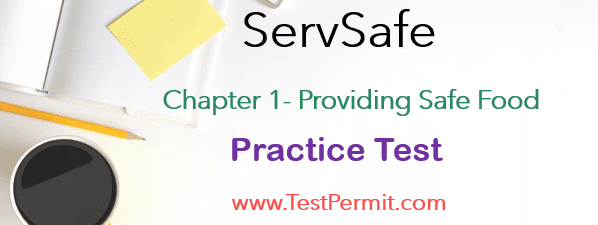ServSafe Chapter 1- Providing Safe Food Practice Test ServSafe Food Handler, Manager, Alcohol, and Allergens exam preparation. Free
Study Questions
• What is a foodborne illness and What is a foodborne illness outbreak?
• What are TCS and ready-to-eat food?
• What are the five risk factors for foodborne illness?
• Which populations have a higher risk for foodborne illness?
• How can you help to keep food safe in your operation?
• What are the roles of government agencies in keeping food safe?
Chapter 1- Providing Safe Food Practice Test
As a manager, your job is more than just understanding food safety practices and creating the necessary procedures. You also must train your staff to follow these procedures, as shown in the photo at right. Staff should be trained when they are first hired and on an ongoing basis. Your entire staff needs general food safety knowledge. O
ther knowledge will be specific to the tasks performed on the job. For example, everyone needs to know the correct way to wash their hands. However, only receiving staff need to know how to inspect produce during receiving. Staff need to be retrained in food safety regularly. When a food handler completes this training, document it.
Once staff are trained, monitor them to make sure they are following procedures. At times, you may notice employees doing tasks incorrectly. Each incorrect task could lead to an increase in risk. When this happens, it is important to correct the situation immediately.
This is called corrective action. If an employee often completes a task incorrectly or if multiple employees complete a task incorrectly, they should be retrained.
Disclaimer: Not affiliated with or endorsed by the National Restaurant Association Educational Foundation (NRAEF). ServSafe is a registered trademark of NRAEF and is used here solely for purposes of identification.
Reference
